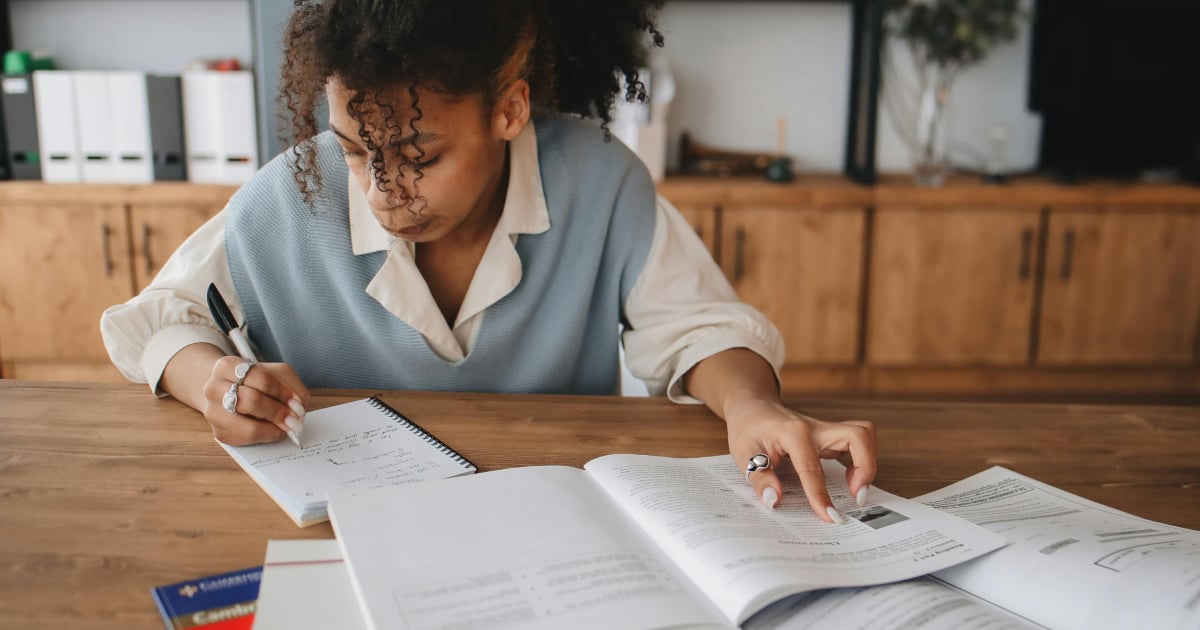
Wondering how to revise for exams? It’s easy to get stuck in a loop of highlighting, copying out, reading and re-reading the same notes. But does it really work?
Not all revision techniques are equally effective. In fact, some have more impact than others. It can be hard to know what revision is worth doing and what’s just an excuse to use your best stationery.
We’ve created this handy guide to help you understand how to revise and prepare for your exams more effectively using techniques that really work.
Contents:
- Practice on past papers
- Give flashcards a go
- Take Cornell notes
- Try SQ3R or SQRRR
- Space it out and mix it up
1. Practice on past papers
If you’re looking for a way to test yourself, past papers are your friend. Nobody really enjoys past papers (after all, you’re basically putting yourself through pretend exams), but evidence shows that doing them improves your learning.
They work for revising for all kinds of exams, from essay-based exams to multiple choice questions and practicals. You can find past papers on your exam board’s website, or your teacher might have a bank of their own.
2. Give flashcards a go
Like past papers, flashcards help you assess what you’ve already learned. They’re a great way to test yourself and improve your long-term memory. They’re also great for recalling bitesize chunks of information for any subject – from definitions, facts and formula, to places, dates and names.
If you prefer pen and paper you can make traditional flashcards; if you prefer to do things digitally there are plenty of flashcard apps out there.
On one side write the question or prompt for the information you’re trying to remember, and on the other write the answer in the form of key words or bullet points.
If you want to make your revision more fun you can meet up with friends and use the flashcards to test each other. Anxiety about exams is common and completely valid, and working with your friends can help you overcome it.
3. Take Cornell notes
If you’re stuck on how to take revision notes before your exams, Cornell notes are a great place to start.
To make Cornell notes, create a table with two columns. In the right-hand column, make detailed notes. In the left-hand column, note down key points, as well as your own thoughts and questions. Write a brief summary at the end of the table to bring it all together (see image below right).
This type of notetaking can be really useful for testing your memory. By covering up one of the columns and trying to remember the contents, you can make sure your revision sticks.
4. Try SQ3R or SQRRR
SQ3R or SQRRR is another great note-taking technique that makes your revision more active. It can help you memorise information you’ve read and focus in on important details. It’s made up of five steps:
- Survey – skim the text to get an overview
- Question – note what questions you have about the text, eg. ‘what does this term mean?’ or ‘how does this fit with my other reading?’
- Read – focus your reading on finding the answers
- Recite – test your understanding by explaining the main points without looking at your notes
- Review – return to your notes, concentrating on the areas you found difficult to recite
By completing these steps, you’ll be more likely to remember the content of what you’ve read and feel ready to take it into your exams with you!
5. Space it out and mix it up
Cramming the day before might seem like it’s better than doing nothing (we’ve all been there), but the evidence shows you’re far better off spacing out your revision.
Use our study timetable to plan your time. If you’re not sure how much revision to do, don’t worry. Each day the timetable will give you a nudge if you’ve gone overboard.
Make sure to relax, refresh and refuel with plenty of breaks between revision sessions and study different topics throughout the day so you stay focused. It’s far more effective to do an hour of useful revision than to spend all day revising the same thing over and over again.
If you find you get easily distracted, there are lots of tools that can help you stay on task,such as Flora.
Lastly, if your favourite revision strategy didn't make the list, don’t worry. If it’s working for you, keep using it, just try mixing in some of these techniques, too. Good luck!
Find out more:
- Learn how to relax before an exam
- Get more revision advice from our students

Discover the Newcastle experience: Our Undergraduate prospectus will guide you through our world-class degrees, the support you can benefit from, and our beautiful city-centre campus.
